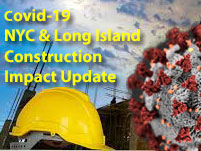“The single biggest problem in communication is the illusion that it has taken place”
– George Bernard Shaw
Construction projects can take months or years requiring endless decisions to be made.There are numerous consultants, engineers, and trades that join the team, and communication is important to keeping your project on budget and on schedule.
To help facilitate and guide stakeholder’s through the design and construction process, an Owner’s Representative serves as liaison between the stakeholder, broker, design team, landlords, contractors, and client vendors. As project managers, we are often funneling feedback, updates and information to our clients, who are not necessarily experts in projects, construction or real estate.
If an Owner’s Rep has solid communication skills, it sets the tone of the project and proves the value we bring to the table. We know when to be fair and stern, and by managing conflict demonstrates our expertise and leadership.
Sometimes Owner’s Reps encounter stakeholders who are frequent complainers and find fault in all we do in managing the project. It is certainly easier on us if we don’t have to engage with that stakeholder outside of our regular communications about the project. However, when we don’t engage them or respond to their issues/complaints, we now have a disengaged stakeholder who can disrupt the project team by communicating negatively about the project to others.
Poor communications can also be reflected in over-communicating to stakeholders. If we are sending out too many emails about the project or setting up too frequent stakeholder meetings, we may lose the attention and engagement of our stakeholders.
To avoid the imbalance, there needs to be a fine balance between too much and too little communication.
Work with your project team to determine:
- Who needs to know what information?
- How often must that information be communicated/shared?
- By what means will information be communicated/shared? Email? Text? Phone?
- Are there any misunderstood goals and objectives?
- How do we handle missed deadlines?
- Is there a lack of buy-in and commitment or misunderstood expectations?
- Are there conflicts among stakeholders and project team members?
Sometimes projects encounter bad news that affects schedule and budget. We may get feedback from our design partners or local officials and approval authorities, that we need to change design in order to conform with code compliance.
Bad news does not get better with age and your Owner’s Rep should not avoid or delay a difficult conversation with you or the project team. The Owners Rep should anticipate questions and address them proactively. During a meeting with the design team, GC or vendor, every task should be followed through with “who will do what by when”. This will help clearly articulate all expectations, avoid miscommunications, and minimize future “difficult conversations”.
It is important we provide solutions, options and recommendations. Keep in mind our role is to set realistic expectations and tread that middle ground between what is maybe the desired outcome, and what is realistic given current client parameters. It’s essential that our approach and methods are in alignment with what the stakeholder would find reasonable.
It’s not how we believe we appear, but how the person on the receiving end perceives our trustworthiness. And one of the most important things you can know about communication – is when to pick up the phone or schedule an in-person meeting and deliver the news directly.
Discover more from Helping NYC & Long Island Commercial Tenants, Owners, and Developers
Subscribe to get the latest posts sent to your email.





